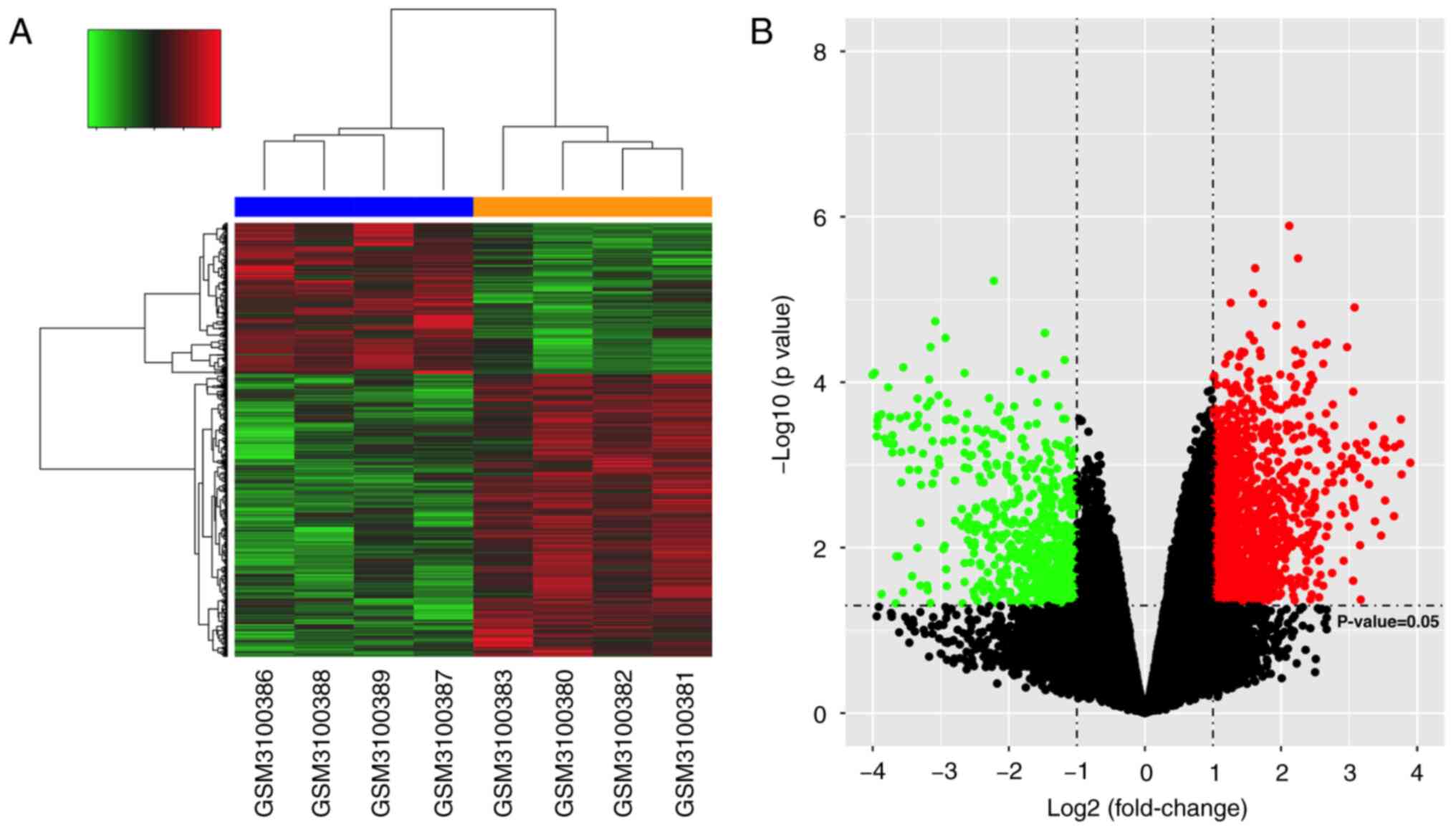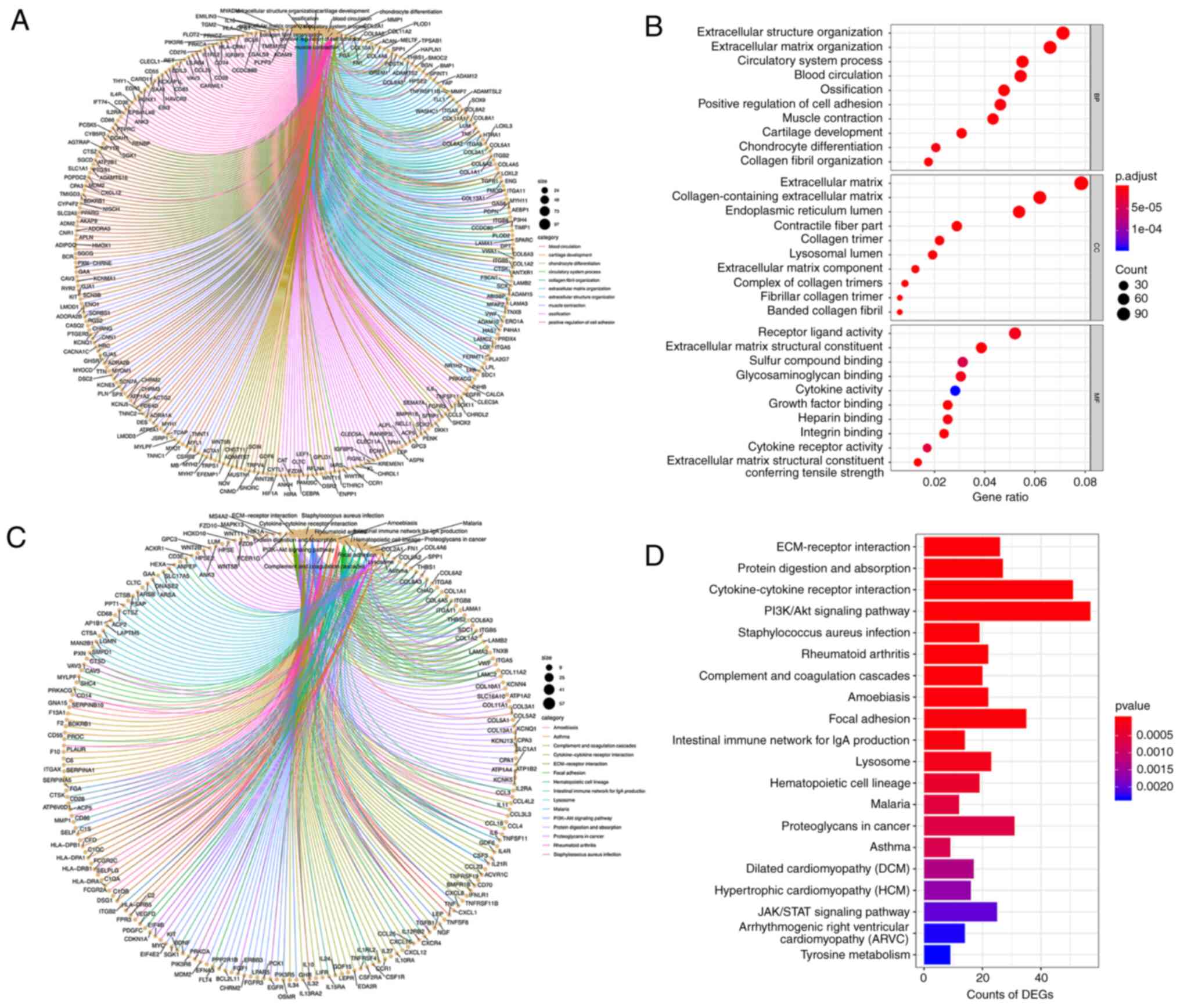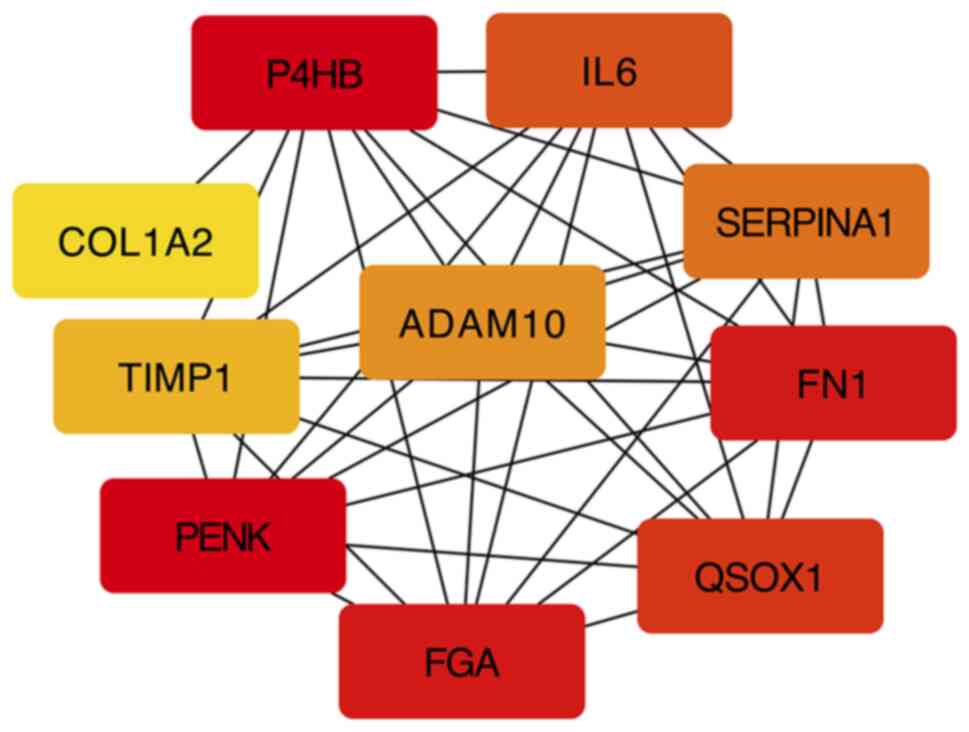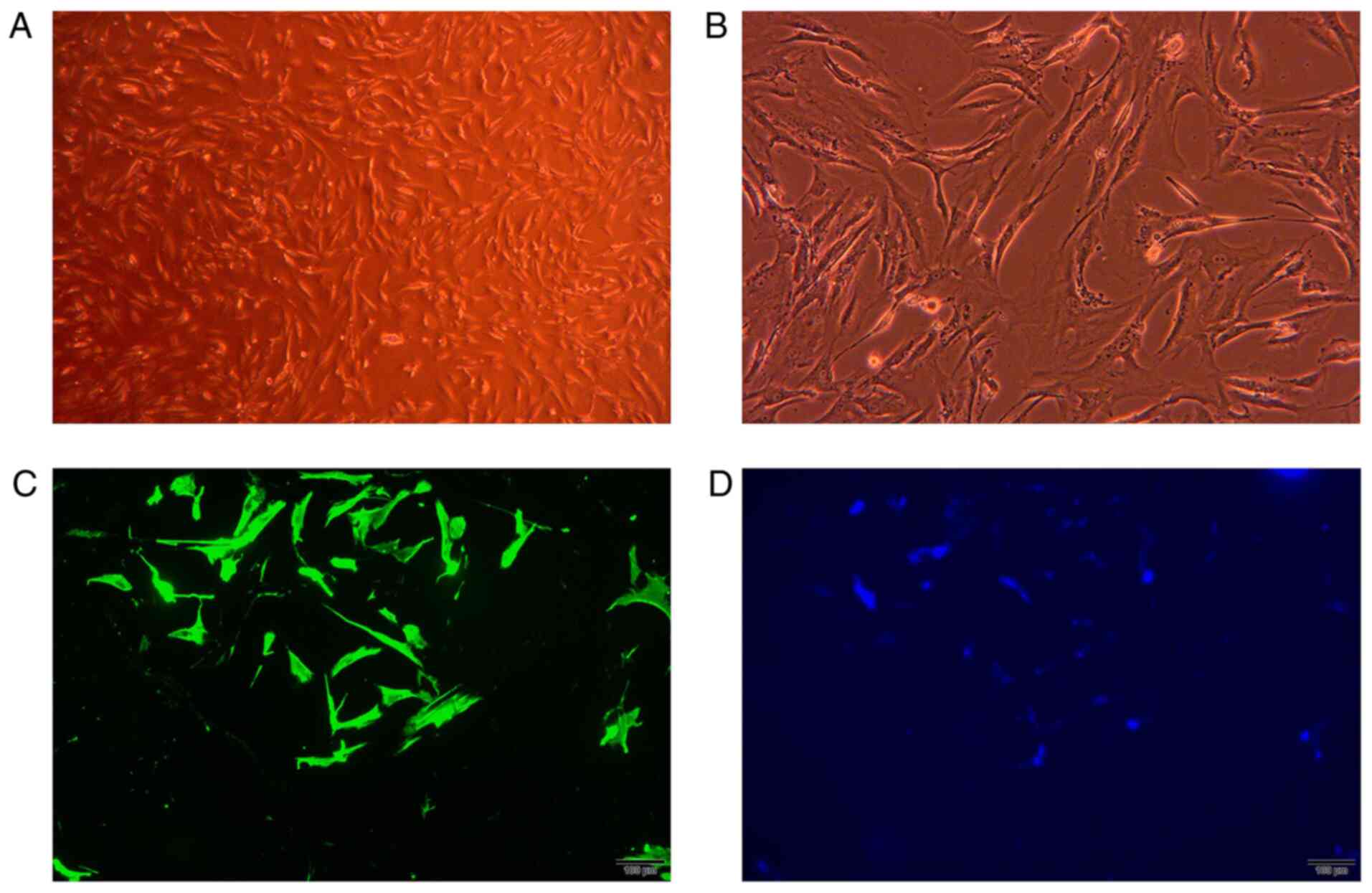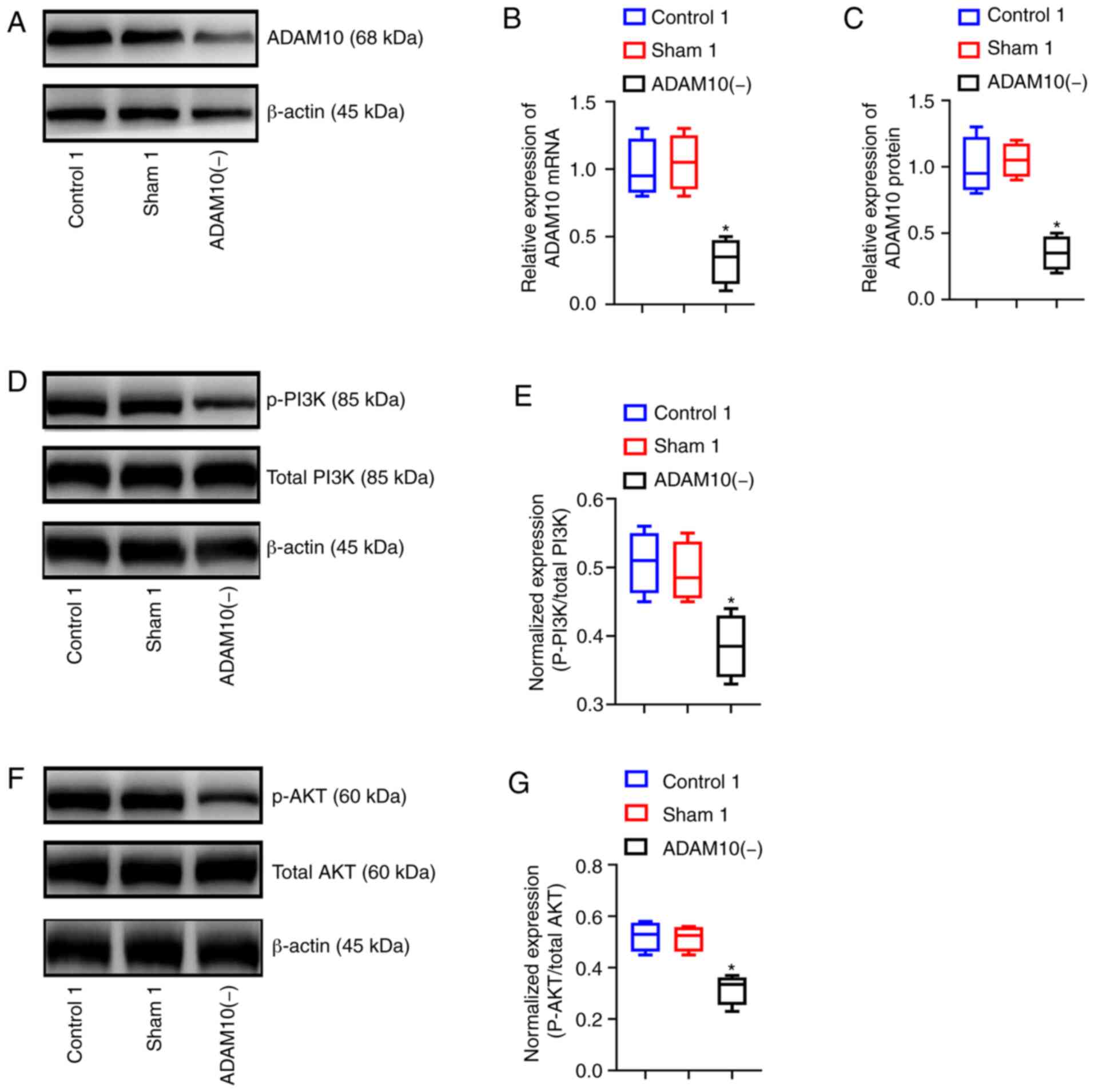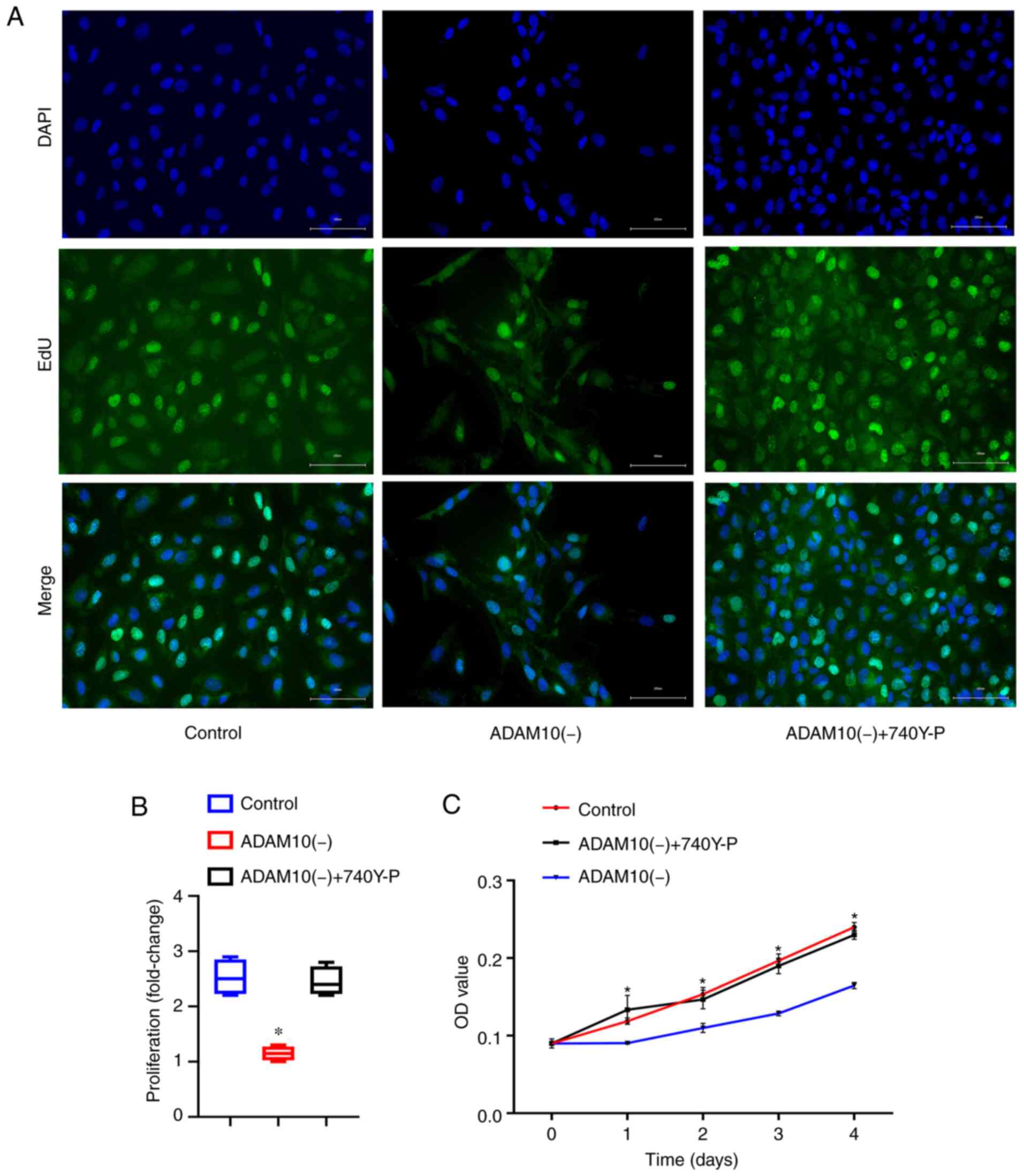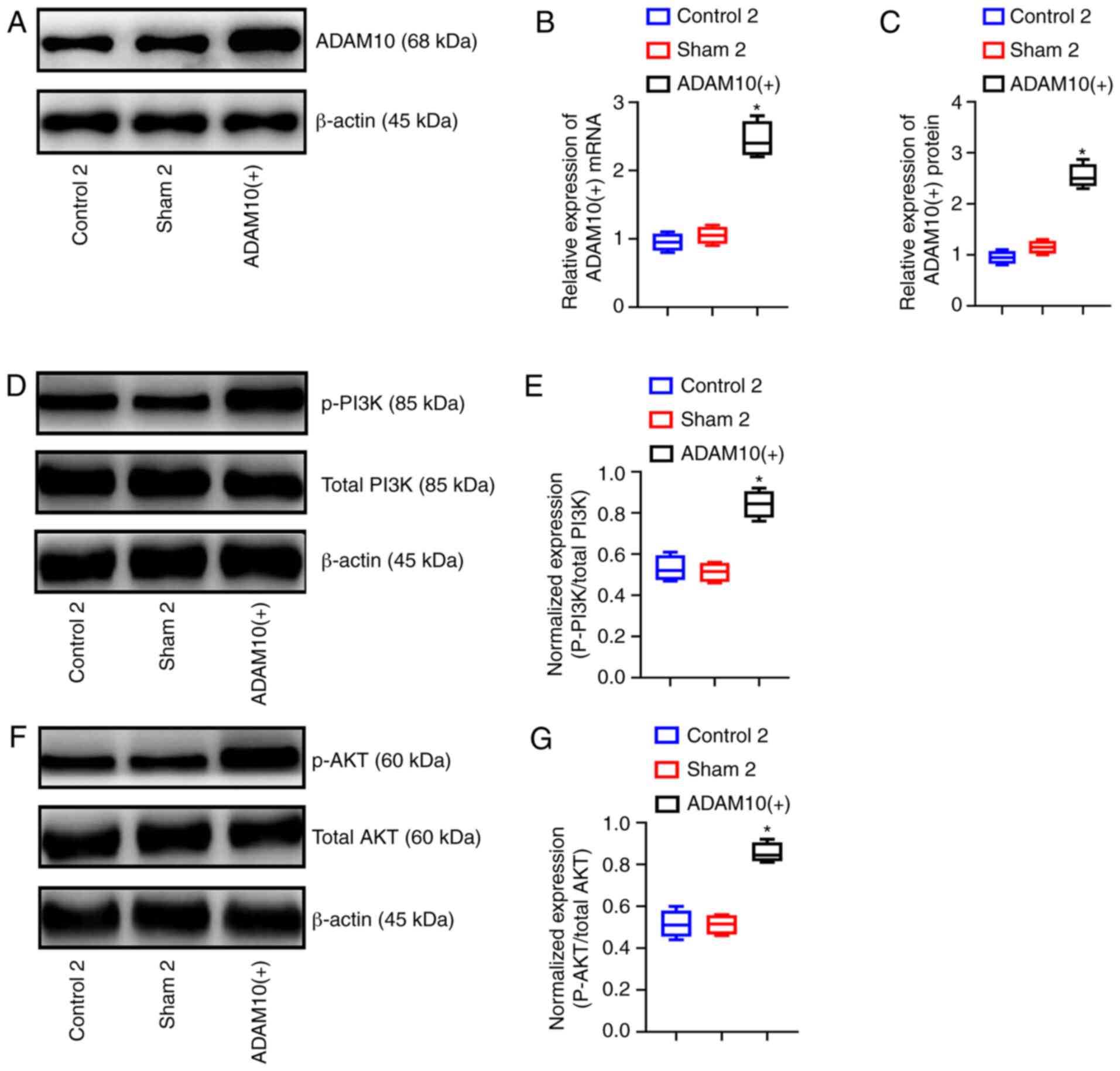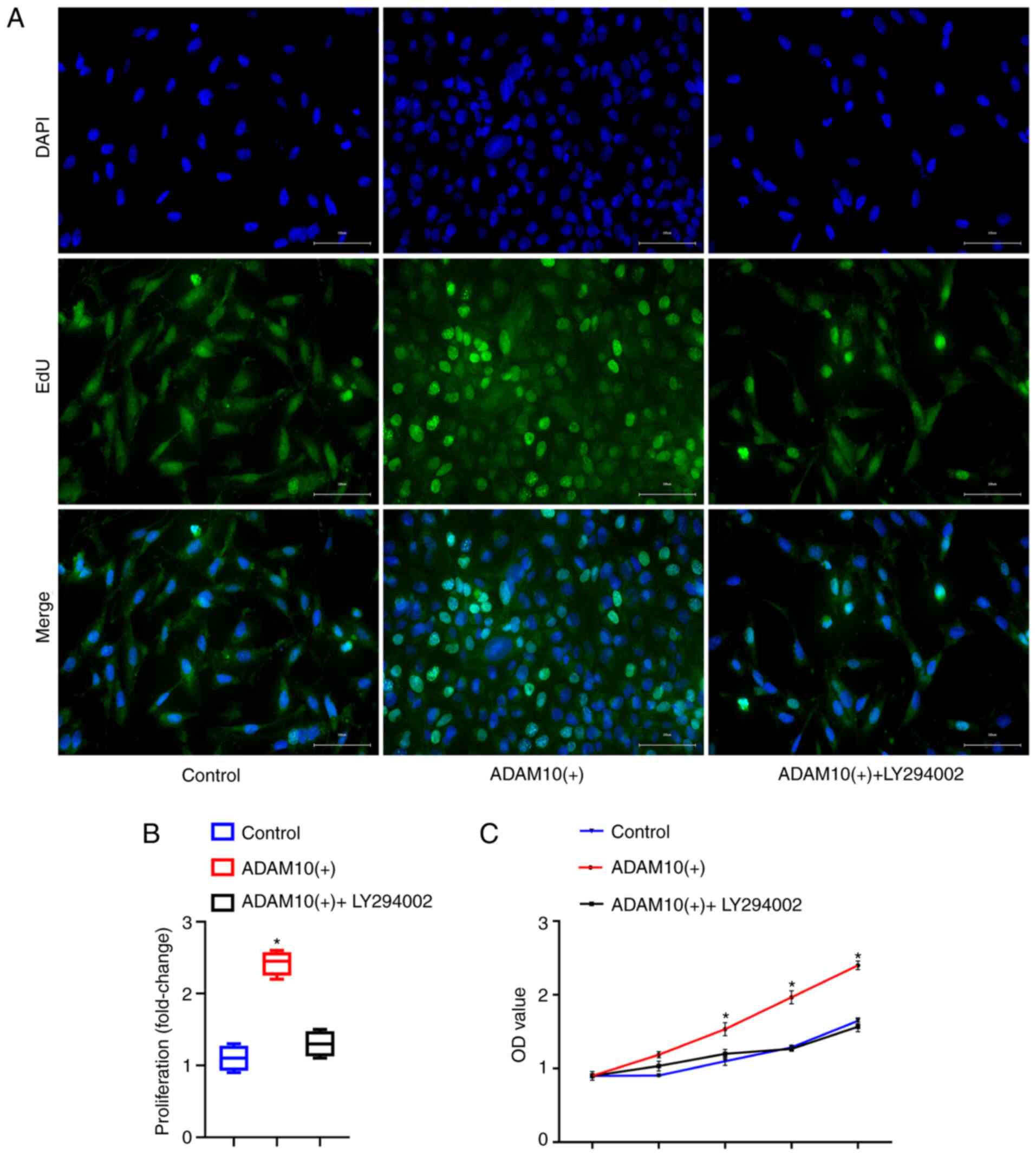|
1
|
Sakai Y, Ito S, Hida T, Ito K, Harada A
and Watanabe K: Clinical outcome of lumbar spinal stenosis based on
new classification according to hypertrophied ligamentum flavum. J
Orthop Sci. 22:27–33. 2017. View Article : Google Scholar
|
|
2
|
Delen E, Doğanlar O, Delen Ö, Doğanlar ZB
and Kılınçer C: The role of JAK-STAT signaling activation in
hypertrophied ligamentum flavum. World Neurosurg. 137:e506–e516.
2020. View Article : Google Scholar : PubMed/NCBI
|
|
3
|
Ciol MA, Deyo RA, Howell E and Kreif S: An
assessment of surgery for spinal stenosis: Time trends, geographic
variations, complications, and reoperations. J Am Geriatr Soc.
44:285–290. 1996. View Article : Google Scholar : PubMed/NCBI
|
|
4
|
Sun C, Liu X, Guan G and Zhang H:
Increased expression of WISP-1 (CCN4) contributes to fibrosis in
the hypertrophied lumber ligamentum flavum. Int J Clin Exp Pathol.
10:1356–1363. 2017.
|
|
5
|
Park JO, Lee BH, Kang YM, Kim TH, Yoon JY,
Kim H, Kwon UH, Lee KI, Lee HM and Moon SH: Inflammatory cytokines
induce fibrosis and ossification of human ligamentum flavum cells.
J Spinal Disord Tech. 26:E6–E12. 2013. View Article : Google Scholar
|
|
6
|
Hur JW, Bum-Joon K, Jin-Hyun P, Kim JH,
Park YK, Kwon TH and Moon HJ: The mechanism of ligamentum flavum
hypertrophy: Introducing angiogenesis as a critical link that
couples mechanical stress and hypertrophy. Neurosurgery.
77:281–282. 2015. View Article : Google Scholar
|
|
7
|
Kang YM, Suk KS, Lee BH, Kim HS, Lee KI,
Park SY, Lee HM and Moon SH: Herniated intervertebral disk induces
hypertrophy and ossification of ligamentum flavum. J Spinal Disord
Tech. 27:382–389. 2014. View Article : Google Scholar : PubMed/NCBI
|
|
8
|
Nakatani T, Marui T, Hitora T, Doita M,
Nishida K and Kurosaka M: Mechanical stretching force promotes
collagen synthesis by cultured cells from human ligamentum flavum
via transforming growth factor-beta1. J Orthop Res. 20:1380–1386.
2002. View Article : Google Scholar : PubMed/NCBI
|
|
9
|
Amudong A, Muheremu A and Abudourexiti T:
Hypertrophy of the ligamentum flavum and expression of transforming
growth factor beta. J Int Med Res. 45:2036–2041. 2017. View Article : Google Scholar : PubMed/NCBI
|
|
10
|
Sun C, Wang Z, Tian JW and Wang YH:
Leptin-Induced inflammation by activating IL-6 expression
contributes to the fibrosis and hypertrophy of ligamentum flavum in
lumbar spinal canal stenosis. Biosci Rep. 38:BSR201712142018.
View Article : Google Scholar : PubMed/NCBI
|
|
11
|
Sairyo K, Biyani A, Goel V, Leaman D,
Booth R Jr, Thomas J, Gehling D, Vishnubhotla L, Long R and
Ebraheim N: Pathomechanism of ligamentum flavum hypertrophy: A
multi-disciplinary investigation based on clinical, biomechanical,
histologic, and biologic assessments. Spine (Phila Pa 1976).
30:2649–2656. 2005. View Article : Google Scholar
|
|
12
|
Sairyo K, Biyani A, Goel VK, Leaman DW,
Booth R Jr, Thomas J, Ebraheim NA, Cowgill IA and Mohan SE: Lumbar
ligamentum flavum hypertrophy is due to accumulation of
inflammation-related scar tissue. Spine (Phila Pa 1976).
32:E340–E347. 2007. View Article : Google Scholar
|
|
13
|
Yücetaş SC and Çakir T: Decreased catalase
expression is associated with ligamentum flavum hypertrophy due to
lumbar spinal canal stenosis. Medicine (Baltimore). 98:e151922019.
View Article : Google Scholar
|
|
14
|
Chen J, Liu Z, Zhong G, Qian L, Li Z, Qiao
Z, Chen B and Wang H: Hypertrophy of ligamentum flavum in lumbar
spine stenosis is associated with increased miR-155 level. Dis
Markers. 2014:7865432014. View Article : Google Scholar : PubMed/NCBI
|
|
15
|
Diboun I, Wernisch L, Orengo CA and
Koltzenburg M: Microarray analysis after RNA amplification can
detect pronounced differences in gene expression using limma. BMC
Genomics. 7:2522006. View Article : Google Scholar : PubMed/NCBI
|
|
16
|
Irizarry RA, Hobbs B, Collin F,
Beazer-Barclay YD, Antonellis KJ, Scherf U and Speed TP:
Exploration, normalization, and summaries of high density
oligonucleotide array probe level data. Biostatistics. 4:249–264.
2003. View Article : Google Scholar : PubMed/NCBI
|
|
17
|
Yu G, Wang LG, Han Y and He QY:
ClusterProfiler: An R package for comparing biological themes among
gene clusters. Omics. 16:284–287. 2012. View Article : Google Scholar : PubMed/NCBI
|
|
18
|
Shannon P, Markiel A, Ozier O, Baliga NS,
Wang JT, Ramage D, Amin N, Schwikowski B and Ideker T: Cytoscape: A
software environment for integrated models of biomolecular
interaction networks. Genome Res. 13:2498–2504. 2003. View Article : Google Scholar : PubMed/NCBI
|
|
19
|
Tang Y, Li M, Wang J, Pan Y and Wu FX:
CytoNCA: A cyto-scape plugin for centrality analysis and evaluation
of protein interaction networks. Biosystems. 127:67–72. 2015.
View Article : Google Scholar
|
|
20
|
Specchia N, Pagnotta A, Gigante A,
Logroscino G and Toesca A: Characterization of cultured human
ligamentum flavum cells in lumbar spine stenosis. J Orthop Res.
19:294–300. 2001. View Article : Google Scholar : PubMed/NCBI
|
|
21
|
Yan B, Huang M, Zeng C, Yao N, Zhang J,
Yan B, Jiang H, Tian X, Ao X, Zhao H, et al: Locally produced IGF-1
Promotes hypertrophy of the ligamentum flavum via the mTORC1
signaling pathway. Cell Physiol Biochem. 48:293–303. 2018.
View Article : Google Scholar : PubMed/NCBI
|
|
22
|
Livak KJ and Schmittgen TD: Analysis of
relative gene expression data using real-time quantitative PCR and
the 2(-Delta Delta C(T)) method. Methods. 25:402–408. 2001.
View Article : Google Scholar
|
|
23
|
Okada M, Oba Y and Yamawa H: Endostatin
stimulates proliferation and migration of adult rat cardiac
fibroblasts through PI3K/Akt pathway. Eur J Pharmacol. 750:20–26.
2015. View Article : Google Scholar : PubMed/NCBI
|
|
24
|
Feng X, Wu C, Yang M, Liu Q, Li H, Liu J,
Zhang Y, Hao Y, Kang L, Zhang Y and Liu S: Role of PI3K/Akt signal
pathway on proliferation of mesangial cell induced by HMGB1. Tissue
Cell. 48:121–125. 2016. View Article : Google Scholar : PubMed/NCBI
|
|
25
|
Maretzky T, Reiss K, Ludwig A, Buchholz J,
Scholz F, Proksch E, de Strooper B, Hartmann D and Saftig P: ADAM10
mediates E-cadherin shedding and regulates epithelial cell-cell
adhesion, migration, and beta-catenin translocation. Proc Natl Acad
Sci USA. 102:9182–9187. 2005. View Article : Google Scholar : PubMed/NCBI
|
|
26
|
Boccalini G, Sassoli C, Bani D and Nistri
S: Relaxin induces up-regulation of ADAM10 metalloprotease in
RXFP1-expressing cells by PI3K/AKT signaling. Mol Cell Endocrinol.
472:80–86. 2018. View Article : Google Scholar
|
|
27
|
Li D, Xiao Z, Wang G and Song X: Knockdown
of ADAM10 inhibits migration and invasion of fibroblast-like
synoviocytes in rheumatoid arthritis. Mol Med Rep. 12:5517–5523.
2015. View Article : Google Scholar : PubMed/NCBI
|
|
28
|
Zhang K, Sun W, Liu XY, Zhao CQ, Li H, Sun
XJ, You-Zhuan X, Ding W and Zhao J: Hypertrophy and fibrosis of the
ligamentum flavum in lumbar spinal stenosis is associated with
increased expression of LPA and LPAR1. Clin Spine Surg.
30:E189–E191. 2017. View Article : Google Scholar : PubMed/NCBI
|
|
29
|
Adair-Kirk TL and Senior RM: Fragments of
extracellular matrix as mediators of inflammation. Int J Biochem
Cell Biol. 40:1101–1110. 2008. View Article : Google Scholar : PubMed/NCBI
|
|
30
|
Yoshida M, Shima K, Taniguchi Y, Tamaki T
and Tanaka T: Hypertrophied ligamentum flavum in lumbar spinal
canal stenosis. Pathogenesis and morphologic and
immunohistochemical observation. Spine. 17:1353–1360. 1992.
View Article : Google Scholar : PubMed/NCBI
|
|
31
|
Kosaka H, Sairyo K, Biyani A, Leaman D,
Yeasting R, Higashino K, Sakai T, Katoh S, Sano T, Goel VK and
Yasui N: Pathomechanism of loss of elasticity and hypertrophy of
lumbar ligamentum flavum in elderly patients with lumbar spinal
canal stenosis. Spine (Phila Pa 1976). 32:2805–2811. 2007.
View Article : Google Scholar
|
|
32
|
Chambers RC and Mercer PF: Mechanisms of
alveolar epithelial injury, repair, and fibrosis. Ann Am Thorac
Soc. 12(Suppl 1): S16–S20. 2015. View Article : Google Scholar : PubMed/NCBI
|
|
33
|
Duffield JS: Cellular and molecular
mechanisms in kidney fibrosis. J Clin Invest. 124:2299–2306. 2014.
View Article : Google Scholar : PubMed/NCBI
|
|
34
|
Park JB, Lee JK, Park SJ and Riew KD:
Hypertrophy of ligamentum flavum in lumbar spinal stenosis
associated with increased proteinase inhibitor concentration. J
Bone Joint Surg Am. 87:2750–2757. 2005. View Article : Google Scholar : PubMed/NCBI
|
|
35
|
Matsuoka T and Yashiro M: The role of
PI3K/Akt/mTOR signaling in gastric carcinoma. Cancers (Basel).
6:1441–1463. 2014. View Article : Google Scholar
|
|
36
|
Lin Z, Zhou P, von Gise A, Gu F, Ma Q,
Chen J, Guo H, van Gorp PR, Wang DZ and Pu WT: Pi3kcb links
hippo-YAP and PI3K-AKT signaling pathways to promote cardiomyocyte
proliferation and survival. Circ Res. 116:35–45. 2015. View Article : Google Scholar :
|
|
37
|
Meng F, Wang F, Wang L, Wong S, Cho WC and
Chan LW: MiR-30a-5p overexpression may overcome EGFR-inhibitor
resistance through regulating PI3K/AKT signaling pathway in
non-small cell lung cancer cell lines. Front Genet. 7:1972016.
View Article : Google Scholar : PubMed/NCBI
|
|
38
|
Edwards DR, Handsley MM and Pennington CJ:
The ADAM metalloproteinases. Mol Aspects Med. 29:258–289. 2008.
View Article : Google Scholar : PubMed/NCBI
|
|
39
|
Pham DH, Kim JS, Kim SK, Shin DJ, Uong NT,
Hyun H, Yoon MS, Kang SJ, Ryu YJ, Cho JS, et al: Effects of ADAM10
and ADAM17 inhibitors on natural killer cell expansion and
antibody-dependent cellular cytotoxicity against breast cancer
cells in vitro. Anticancer Res. 37:5507–5513. 2017.PubMed/NCBI
|
|
40
|
Klein T and Bischoff R: Active
metalloproteases of the A disintegrin and metalloprotease (ADAM)
family: Biological function and structure. J Proteome Res.
10:17–33. 2011. View Article : Google Scholar
|
|
41
|
Scheller J, Chalaris A, Garbers C and
Rose-John S: ADAM17: A molecular switch to control inflammation and
tissue regeneration. Trends Immunol. 32:380–387. 2011. View Article : Google Scholar : PubMed/NCBI
|
|
42
|
Bae WY, Park SK, Kim DH, Koh TK, Hur DY
and Chueh HW: Expression of ADAM17 and ADAM10 in nasal polyps. Int
Forum Allergy Rhinol. 6:731–736. 2016. View Article : Google Scholar : PubMed/NCBI
|
|
43
|
Matthews AL, Noy PJ, Reyat JS and
Tomlinson MG: Regulation of A disintegrin and metalloproteinase
(ADAM) family sheddases ADAM10 and ADAM17: The emerging role of
tetraspanins and rhomboids. Platelets. 28:333–341. 2017. View Article : Google Scholar :
|
|
44
|
Pruessmeyer J and Ludwig A: The good, the
bad and the ugly substrates for ADAM10 and ADAM17 in brain
pathology, inflammation and cancer. Semin Cell Dev Biol.
20:164–174. 2009. View Article : Google Scholar
|
|
45
|
Chueh HW, Park SK, Hur DY and Bae WY:
Expression profile of ADAM10 and ADAM17 in allergic rhinitis. Int
Forum Allergy Rhinol. 5:1036–1041. 2015. View Article : Google Scholar : PubMed/NCBI
|
|
46
|
Huang WH, Chen W, Jiang LY, Yang YX, Yao
LF and Li KS: Influence of ADAM10 polymorphisms on plasma level of
soluble receptor for advanced glycation end products and the
association with alzheimer's disease risk. Front Genet. 9:5402018.
View Article : Google Scholar : PubMed/NCBI
|
|
47
|
Lagares D, Ghassemi-Kakroodi P, Tremblay
C, Santos A, Probst CK, Franklin A, Santos DM, Grasberger P,
Ahluwalia N, Montesi SB, et al: ADAM10-Mediated ephrin-B2 shedding
promotes myofibroblast activation and organ fibrosis. Nat Med.
23:1405–1415. 2017. View Article : Google Scholar : PubMed/NCBI
|
|
48
|
Liu S, Zhang W, Liu K, Ji B and Wang G:
Silencing ADAM10 inhibits the in vitro and in vivo growth of
hepatocellular carcinoma cancer cells. Mol Med Rep. 11:597–602.
2015. View Article : Google Scholar
|















